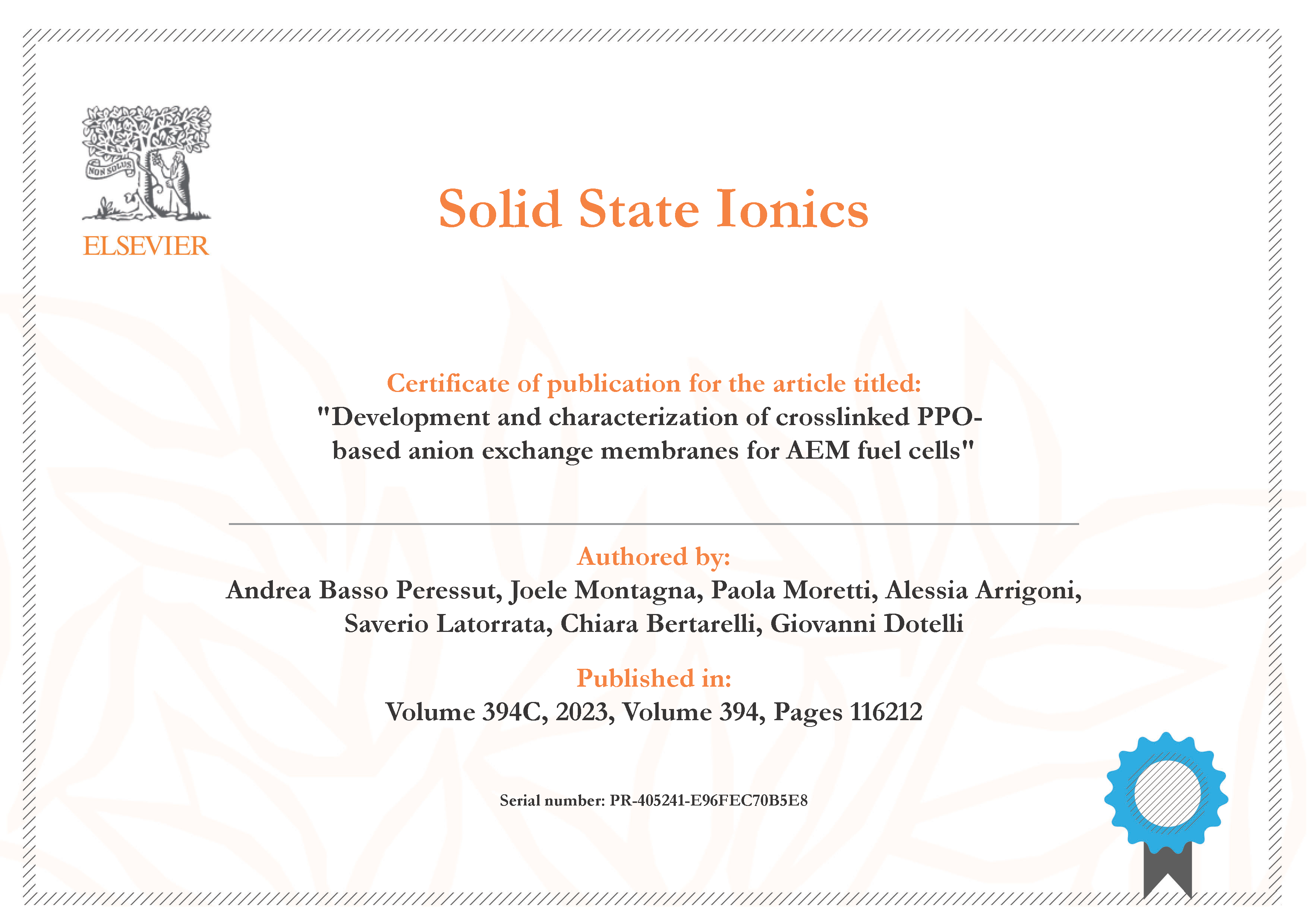A. Basso Peressut, J. Montagna, P. Moretti, A. Arrigoni, S. Latorrata, C. Bertarelli, G. Dotelli
Solid State Ionics, 394 (2023), 116212, 1-8
https://doi.org/10.1016/j.ssi.2023.116212
A series of poly(2,6-dimethyl-1,4-phenylene oxide) (PPO)-based anion exchange membranes (AEMs), crosslinked with bis-imidazolium cations, were synthesized and studied as possible ionic conductors for AEM fuel cells. PPO was chosen considering its remarkable thermo-mechanical properties and the possibility to functionalize its backbone in many possible ways, such as bromination, which was carried out in this work by quantitatively controlling the amount of linked halogens. A novel procedure involving 1,6-bis(2-methylimidazol-1-yl)hexane (bimh) was developed to crosslink PPO with bromination degrees of 14 mol% and 33 mol%, allowing a fast, efficient, and almost quantitative substitution of bromine atoms (> 94%). The obtained crosslinked cast membranes were characterized by 1H NMR, thermogravimetry, EDX and ATR-FTIR spectroscopies, as well as by evaluating water uptake (WU), swelling ratio (SR), ex-situ ionic conductivity by means of electrochemical impedance spectroscopy (EIS), and alkaline stability. WU and EIS tests were performed in conditions of complete hydration (95% relative humidity) and in the 20–100 °C range. The produced AEMs exhibited uniform features, with ion-carrying and water retention capabilities properly controlled and depending on the bromination degree of PPO. Ionic conductivity and water uptake increased with the crosslinking degree, up to a maximum of 140.6 mS cm−1 and 22.3% at 100 °C, coherently with the higher number of anchoring sites for OH− ions.

